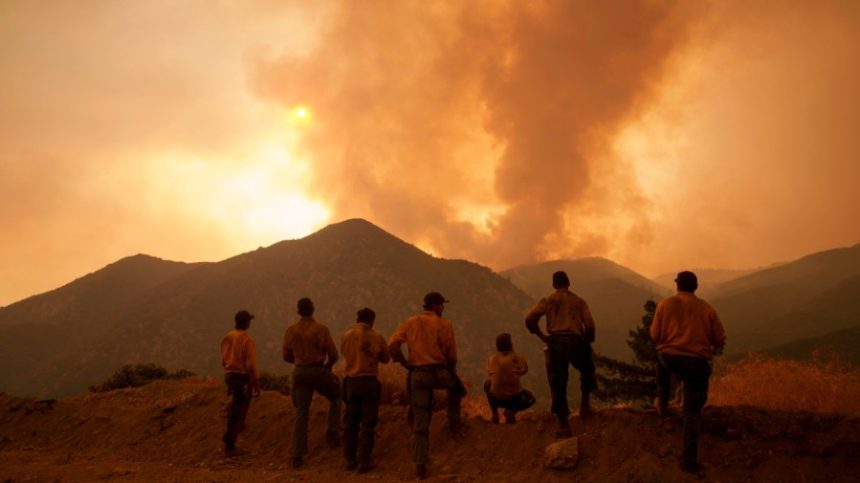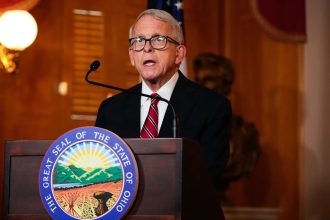More than 30 years ago, the U.S. became the first industrialized country to ratify the world’s first climate treaty. Since then, Congress has done little to honor that commitment.
Now, climate change is not just an environmental issue — it has become a quality-of-life issue affecting every American city and family.
Climate impacts are most obvious as communities turn to ash, houses float away on swollen rivers, tornadoes reduce neighborhoods to rubble, and the air gets so hot that we risk our lives by going outside. More than 4 million Americans were displaced from their homes by weather disasters last year. Four in 10 people live in counties hit by one or more weather disasters during the last two months. More than one in four homes, worth nearly $13 trillion, are at serious or extreme risk of weather disasters.
However, global warming is also driving up inflation, healthcare costs, food prices and insurance rates.
Polls show that 70 percent of Americans now believe climate change is a serious problem, 64 percent support the development of clean energy, and 52 percent consider global warming a top priority for the president and Congress. Yet, the president still insists that climate change is a hoax.
Worse, he is methodically destroying the government’s ability to understand, anticipate and help mitigate climate change. Trump wants to eliminate FEMA and the government’s financial safety net for states and communities that have exhausted their disaster funds.
There was a glimmer of hope in 2022 when Congress worked with President Biden to pass the Inflation Reduction Act (IRA). It included the nation’s largest-ever investment in clean energy. Over the next two years, financing for carbon-free energy increased by 71 percent. Each federal dollar attracted six private dollars, leading to a national investment of nearly $500 billion by mid-2024.
But with clawbacks, executive orders and the big bad budget bill, Trump and congressional Republicans rolled back the IRA’s clean-energy incentives and stopped carbon-free energy projects already under construction. Instead, the president is doing everything he can to increase America’s production, consumption and overseas sales of fossil fuels.
Despite the polls showing overwhelming public concern about climate change, another type of poll sends the wrong signal to politicians. When pollsters ask people to rank issues in order of importance, climate change typically finishes near the bottom. Yet global warming is not a freestanding issue. It has a significant impact on the issues that rank high, including the economy, cost of living, jobs, inflation and energy prices.
The news media and climate activists must do a better job of helping the American people connect the dots.
For example, during last year’s campaign, Trump vowed to cut energy and electricity costs in half. Instead, electricity prices are rising at a rate more than twice that of inflation. They are expected to rise another 17 percent this year. The cost of natural gas, which provides 40 percent of America’s electricity, jumped 40 percent in the first half of the year compared to 2024. It’s projected to continue rising.
Meanwhile, the solar and wind technologies Trump is suppressing are the least-expensive way to generate electricity, even without government subsidies. By disinvesting in clean energy, Trump’s budget bill is expected to force households to pay nearly $200 more annually for energy and to drive up industrial energy costs as much as $11 billion in the next decade. The U.S. is struggling to meet the nation’s power demands, but Trump’s bill will reduce the build-out of clean-power technologies by as much as 60 percent through 2035, according to the Rhodium Group.
The Inflation Reduction Act put America on the path to achieve a net-zero carbon economy over the next 25 years. Research published by the National Library of Medicine estimates that, by leaving that path, Trump’s energy policies will lead to nearly 990,000 asthma attacks, more than 40,000 heart attacks, 1.5 million respiratory illnesses, and 3.3 million lost workdays in 2050 alone.
Trump’s EPA is gutting clean air rules, including limits on greenhouse gas emissions. One analysis found that every dollar polluters save by eliminating these rules will cost the American people six dollars in hospital and healthcare bills.
Trump talks about bringing manufacturing jobs back to America. Last year, there were nearly 3.6 million jobs in America’s clean-energy sector. The sector’s jobs grew more than twice as fast as the rest of the workforce. Trump’s policies “could reverse years of progress and put hundreds of thousands of workers at risk,” according to Bob Keefe, whose organization E2 monitors the nation’s energy employment.
The clean-energy sector was “one of the hottest and most promising job sectors in the country at the end of 2024,” Keefe says. “Now, clean energy job growth is at serious risk — and with it, our overall economy.”
Homeowners’ insurance costs have increased by 70 percent since 2021, due in part to climate change. Nearly half of the nation’s homeowners say their premiums have gone up over the last year.
Heatwaves and droughts are significant factors contributing to the rise in food prices. “Until we get to net-zero emissions, extreme weather will only get worse, and it’s already damaging crops and pushing up the price of food all over the world,” according to Maximilian Kotz of the Potsdam Institute for Climate Impact Research in Germany. Other researchers warn that food costs may rise by 3.2 percent annually due to higher average temperatures.
Researchers funded in part by the National Science Foundation reported in June that the loss of clean-energy investments will cost Americans $160 billion in income over the next decade. The same study concluded that Trump’s cuts in clean-energy investments will reduce GDP by more than $1 trillion over 10 years.
Trump wants “American energy dominance,” but he’s betting the nation’s future on the wrong resources, leaving the global clean energy market to China. The International Energy Agency expects clean-energy investment to grow to a record $2.2 trillion this year, nearly twice the investment in fossil fuels. It expects global oil demand to peak in five years.
If we connect the dots, perhaps Americans would demand that Congress restore the nation’s investments in clean energy. Maybe more clean-energy champions would run for Congress next year. What we know for certain is that Trump’s formula of rising inflation, higher energy bills, lost jobs, dirty air, poor public health and relentless weather catastrophes will not make America great again.
William S. Becker is co-editor of and a contributor to “Democracy Unchained: How to Rebuild Government for the People,” and a contributor to Democracy in a Hotter Time, named by the journal Nature as one of 2023’s five best science books. He previously served as a senior official in the Wisconsin Department of Justice. He is currently executive director of the Presidential Climate Action Project.
Copyright 2025 Nexstar Media, Inc. All rights reserved. This material may not be published, broadcast, rewritten, or redistributed.
For the latest news, weather, sports, and streaming video, head to The Hill.









